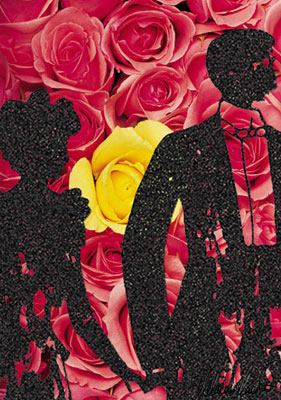All Nonfiction
- Bullying
- Books
- Academic
- Author Interviews
- Celebrity interviews
- College Articles
- College Essays
- Educator of the Year
- Heroes
- Interviews
- Memoir
- Personal Experience
- Sports
- Travel & Culture
All Opinions
- Bullying
- Current Events / Politics
- Discrimination
- Drugs / Alcohol / Smoking
- Entertainment / Celebrities
- Environment
- Love / Relationships
- Movies / Music / TV
- Pop Culture / Trends
- School / College
- Social Issues / Civics
- Spirituality / Religion
- Sports / Hobbies
All Hot Topics
- Bullying
- Community Service
- Environment
- Health
- Letters to the Editor
- Pride & Prejudice
- What Matters
- Back
Summer Guide
- Program Links
- Program Reviews
- Back
College Guide
- College Links
- College Reviews
- College Essays
- College Articles
- Back
THH: Notre Dame, Our Lady
The problem was I liked the song, I liked the music and the French, but there were problems, massive problems, and I couldn’t even sing the song, let alone in tune, and knew deep down I probably shouldn’t lip sync all the way to Consumer Economics. So I clenched my phone, grabbed my books, and silently, shamefully enjoyed “Belle.”
It’s been a tough few weeks, after discovering an almost violent passion for the French musical by Luc Plamondon, Notre-Dame de Paris. It’s a closer interpretation of Victor Hugo’s epic than the Disney animated film, the 1997 live version starring Bruno Pelletier as the poet Gringoire; Hélène Ségara as the gypsy Esmeralda; Daniel Lavoie as the priest Claude Frollo; Patrick Fiori as the golden Phoebus; and Garou as the hunchback of Notre Dame, Quasimodo.
By the time “Belle” rolls around, one of the musical’s more popular songs, Quasimodo idolizes Esmeralda, Frollo hates and adores her, Phoebus is infatuated, and Esmeralda loves Phoebus.
The three men advance in perfect rhyme, embodying three very different forms of love. Esmeralda, splayed on the ground, is literally an object to possess. And some of the rhymes are downright mean, as Frollo derails her as the devil incarnate, dragging him towards the fires of hell, others suggestive, referencing repeatedly her “dancing” skirt. Quasimodo’s love is pure, but obsessive, Frollo’s cruel, Phoebus’ golden and superficial. But geez, can they sing.
I have one rule about the music on my phone. Since I listen to my playlist mechanically, in order and on repeat, I try to practice what I preach, and stick to respectable lyrics. That doesn’t mean profanity or bad habits can’t appear in any of the dozens of songs, but I’ve asked myself to stay away from the brainwashing stuff. Whatever casually, cheerfully goes against my values is out.
There seemed to be plenty wrong with “Belle,” everything from the glamorized lust to the objectification of Esmeralda. Still, I couldn’t let go of the creeping guitar line, invisible orchestra, and gorgeous timbre of Garou, Lavoie, and Fiori combined. Which led to another question: is art supposed to reflect, or change society? Can it do both?
It seems easier to argue art is only obligated to reflect the present; almost anything can fly under the right flag. Notre-Dame de Paris is supposed to be set in the fifteenth century, when in many parts of the world, a woman was not much more than an object to be conquered, used, and discarded. The perverted lust of Frollo, an older man on a younger girl, can almost be excused; it probably happened. And yet the musical itself first premiered at the turn of the 21st century, wrapped up in the still-hot topic of foreign refugees seeking sanctuary. Even if the musical was meant to change anti-immigrant sentiment and a backwards treatment of women, the curtain still falls on a killed Esmeralda, the other gypsies driven from Paris. If the musical set out simply to illuminate what they wanted to change, audiences lacking a critical lens might get a different message, persuaded by the music.
My music teacher had a different answer. Art tells the truth, she said firmly, as we learned about the Russian composer Dmitri Shostakovich before WWII. Denounced by the government for his excessively “Westernized” music, Shostakovich was commanded to pen patriotic tunes that would support his country. Still, his famous Waltz No. 2 that we played in orchestra carries a strained edge, inflected with jazz chords, revealing another layer of tension beneath the swirling coats and dresses.
The world he saw around him permeated his music. Shostakovich had to tell the truth. Perhaps Notre Dame of Paris, our lady, felt the same way.

Similar Articles
JOIN THE DISCUSSION
This article has 0 comments.

What does "THH" stand for? Good question! It's THE HOLY HITCHHIKE... The name is Ala Nova, and you have entered the domain of my discussion, thought, and paraphernalia. Enjoy, and let loose your commentary and suggestions below. A new column every Friday!